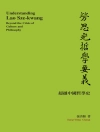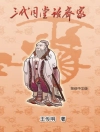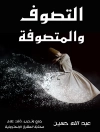The ‘Kama Sutra (With Illustrations)’ stands as a monumental anthology, encapsulating the depths of human sensuality, the intricacies of sexual conduct, and the philosophical underpinnings of love. This collection, transcending mere eroticism, introduces readers to a plethora of literary styles, from the didactic to the poetic, all serving to illuminate the text’s rich historical and philosophical context. The inclusion of illustrations enhances the interpretive experience, bridging cultural and temporal gaps and providing a visual complement to the vivid prose and poetry. The anthology’s diversity, spanning various aspects of human relations and social mores, marks it as a standout contribution to literary and scholarly discourses on human sexuality and interpersonal relationships. The collaborative work between the ancient author Vatsyayana and the 19th-century translator Richard Francis Burton brings together a unique cross-cultural and temporal dialogue, enriching the text with perspectives that span centuries and continents. Vatsyayana, whose work is deeply rooted in Hindu philosophies of love and pleasure, provides the foundational text, which Burton, an orientalist with a deep passion for exploring and unveiling the sensual cultures of the East, translates and annotates. This synergy underlines a significant historical and cultural intersection, offering a nuanced exploration of the themes of desire, love, and societal norms. ‘Readers who delve into the ‘Kama Sutra (With Illustrations)’ are afforded a rare opportunity to explore an anthology that bridges ancient and modern worlds, opening up a panorama of human experience mediated through the lens of sensuality and social interaction. This collection is recommended not only for its educational value and its rich tapestry of insights into human relationships but also for fostering a deeper understanding and appreciation of the dialogue between ancient wisdom and contemporary interpretation. It is a must-read for those seeking to deepen their understanding of the complex interplay between human desire, societal norms, and cultural expressions of intimacy.
Yazar hakkında
Vatsyayana, an ancient Indian philosopher, is best known for his work on human sexuality, the ‘Kama Sutra’ (With Illustrations). Not much is known about Vatsyayana’s life with certainty; his time is often placed between the 1st and 6th centuries AD, and he is believed to be a scholar of the Vedic tradition. ‘Kama Sutra’ is considered to be a scholarly composition, presenting the concept of kama—one of the four goals of Hindu life—as an art to be cultivated, a perspective that entails more than mere eroticism. The work dives deeply into the psychology of love and intimacy, discussing the social aspects and interpersonal dynamics of partnerships. The compendium is structured into seven sections, with matters ranging from attraction to the codification of love in the marital setting and beyond. Unlike some misperceptions in contemporary interpretations, the book provides a comprehensive guide on the art of living a balanced and fulfilling life, not limiting itself to the sexual facets. While Vatsyayana’s ‘Kama Sutra’ has become a symbol of the sophisticated eroticism of ancient India, its illustrations and explorations of love have continued to inspire and provoke scholarly discourse in Indian studies, psychology, and the philosophy of sex and relationships.












